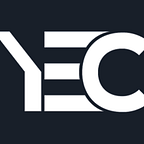Nine Effective Ways to Choose Between Multiple Technical Solutions
In situations where there are multiple solutions to a problem, it can be overwhelming to know which solution is best for your business. It can complicate matters even more when three—or more — team members each present their own technical solutions to the issue at hand. What is the best way to determine which, if any, of these solutions to go with?
To help you, we asked nine members of Young Entrepreneur Council their preferred method when this situation arises. Here are their solutions and why they find these methods useful in making important business decisions.
1. Conduct a SWOT Analysis
A good, quick Strengths, Weaknesses, Opportunities, and Threats analysis can often help to identify which problem will lead to the best solution and understand the exact drawbacks of each one. It’s is an open enough method that you can ask questions about multiple business areas, including finance, operations and customer strategy. — Nicole Munoz, Nicole Munoz Consulting, Inc.
2. Dive Deeper Into Each Solution
Look at each solution for the original requirements, but then include additional factors such as impact on other areas of the business, long-term growth and long-term cost. Have each team member come back with a detailed plan for implementation and what impact it will have on the organization in one to five years. This usually leads to a clear winner. — Monica Snyder, Birdsong
3. Ask the Right People to Weigh In
When solving a problem, I tend to run things through a particular decision-making sieve of weighing economic, brand, worst-case scenario, best case, opportunity cost and gut instinct. I also know that while I have accumulated lots of experience, there is no substitute for having the right people in the room and ensuring that we have the right person making the right calls. — Ashley Merrill, Lunya
4. Test the Least Expensive, Shortest Implementation Solution First
Eliminate the least practical solution based on cost and implementation time, and then run the least expensive and shortest implementation first. If there are significant issues within the first two weeks, determine if it is more cost effective to implement and test option two or correct option one. If there is little additional cost, it’s valuable to run option two for the additional data collection and user testing. — Darby Cox, Smoke Cartel Inc
5. Seek In-Depth Proof
The technical solution that offers the most in-depth proof or validation that it works will win in my mind. I need to see which one has the best chance of working and why. — Serenity Gibbons, NAACP
6. Run Simulations for Each
I prefer to see a simulation to see how each technical solution might work and how that works determines which one I select. While I can’t be completely sure, this does help provide a better picture of what might work best. — Angela Ruth, Calendar
7. Explore the Data
Always ask for data that backs up their method. At the end of the day, data-driven analytics is the best way to understand your company’s performance — wins and losses. Depending on which of the three shows the most credible data, we will pick one. You can also A/B test a variety of solutions and see which one works best for your company specifically and then adopt the best-performing option. — Chelsea Rivera, Honest Paws
8. Look for Passion in the Pitch
When given multiple solutions to a problem, I have to look beyond what is “correct.” In many instances, three options could be correct, so I bring something else into the mix — passion in the pitch. If my employees can not only prove they’re right but make me feel like their solution will mean the most for the long-term success of the company, it’s a winner. Feeling differentiates the solution. — Annie Eaton, Futurus
9. Study Previous Methods
If you’ve already used some of the solutions presented, you can use that to determine if they worked well or not. If they didn’t, then you should move on to one of the other solutions. However, if they solved your problem and brought about positive results you were looking for, it might be wise to stick with what works best. — Stephanie Wells, Formidable Forms
These answers are provided by Young Entrepreneur Council (YEC), an invite-only organization comprised of the world’s most successful young entrepreneurs. YEC members represent nearly every industry, generate billions of dollars in revenue each year and have created tens of thousands of jobs. Learn more at yec.co.
